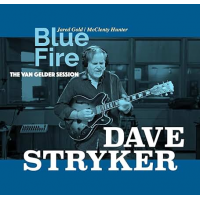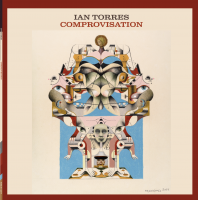Home » Jazz Articles » Album Review » Marvin Blague: Epistrophal Astronomy: The Hidden Code of...
Marvin Blague: Epistrophal Astronomy: The Hidden Code of Thelonious Monk
By the end of the night he was convinced there was a subtle number code in Monk's odd structures, although his roommates reportedly dismissed it as "just that stoner ditching his turn to do the damn dishes again." Blague's dissection of bebop chordings and note intervals did result in a term paper that's remained legendary among the school's faculty ever since. Not only that, he also concluded that Monk's musical language actually hides some kind of cosmic message, bundled as a mathematical challenge for humanity to decode. His liner notes elaborate, "Come on, what human being has Sphere for a middle name anyway?"
Or so the story goes. Whatever the truth, the result is.... truly something to behold, if you dare. The bafflingly one-of-a-kind Epistrophal Astronomy is Blague's answer in musical code. Here he builds a vast ear-bending collage with some of the weirdest instruments ever designed, from theremin to Synclavier to Continuum keypad to electronic reeds, stacking mind-bending chords and harmonies in ways nature clearly never intended. There may even be a piano in there underneath the electronics, but it would take exceptional ears or sonic analysis to tell for sure. There are a couple passages that vaguely groove with a little stride or swing, but good luck trying to remember how they sounded by the time these 68 minutes of noise are over. By comparison, this makes Stockhausen sound as smooth as Muzak.
It remains unclear what Blague's return message to the cosmos is actually meant to be. He claims that it would be impossible to explain, in the same way it's impossible to explain why "Epistrophy" doesn't feel half as awkward as it should, which, fair point. Are you a fan of mathematically tricky music makers such as Nik Bärtsch or Stephan Thelen? Perhaps already inured to the bizarre drones of Pierre Schaeffer or Sunn O)))? It doesn't matter—you still probably won't have any clue what you're hearing.
Track Listing
Cosmonaut; Ba-Lack Blazars Ba-Lasers Make; It's 'Lonious Out in Space; Criss-Cross-Cosmos; I. Meditation; II. Counter Rotation; III. Elongation; Twilight with Bessie; Perihelion.
Personnel
Marvin Blague
keyboardsAdditional Instrumentation
Marvin Blague: synthesizers, triode vacuum tube, theremin, glass harmonica, Minimoog, Mellotron, tape loops, EWI, piano (possibly).
Album information
Title: Epistrophal Astronomy: The Hidden Code of Thelonious Monk | Year Released: 2023 | Record Label: April First Records
Tags
PREVIOUS / NEXT
Support All About Jazz
 All About Jazz has been a pillar of jazz since 1995, championing it as an art form and, more importantly, supporting the musicians who make it. Our enduring commitment has made "AAJ" one of the most culturally important websites of its kind, read by hundreds of thousands of fans, musicians and industry figures every month.
All About Jazz has been a pillar of jazz since 1995, championing it as an art form and, more importantly, supporting the musicians who make it. Our enduring commitment has made "AAJ" one of the most culturally important websites of its kind, read by hundreds of thousands of fans, musicians and industry figures every month.



















